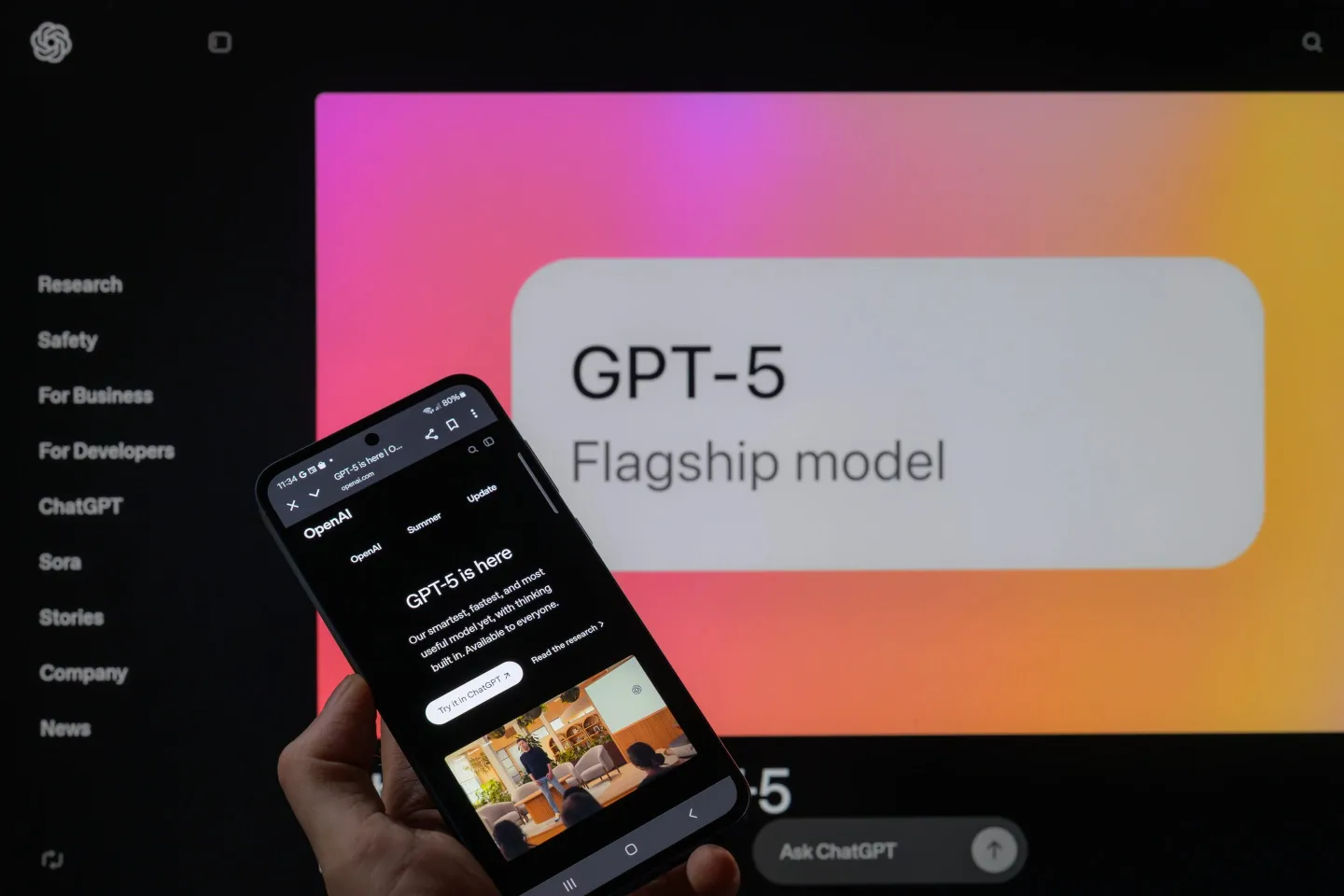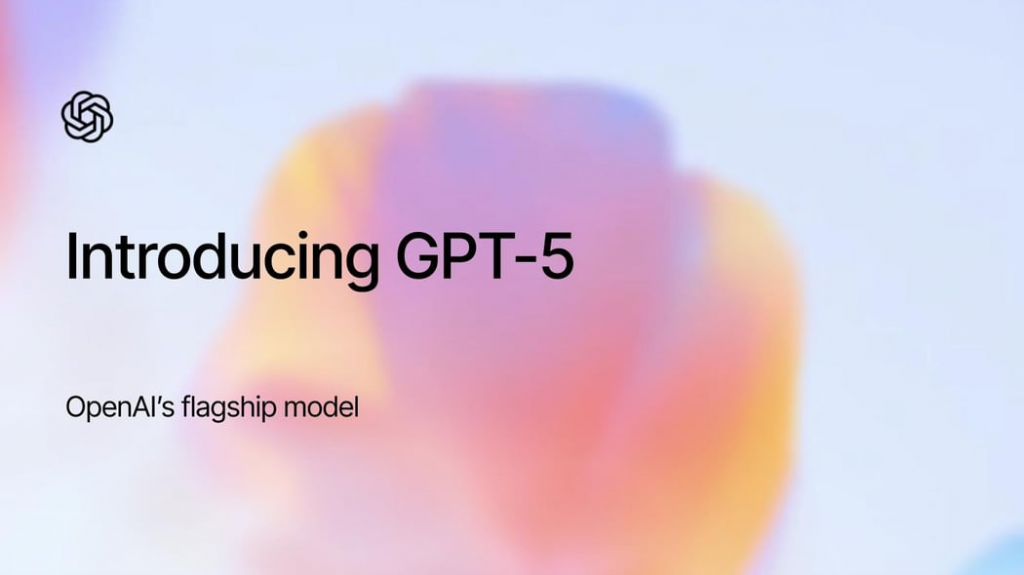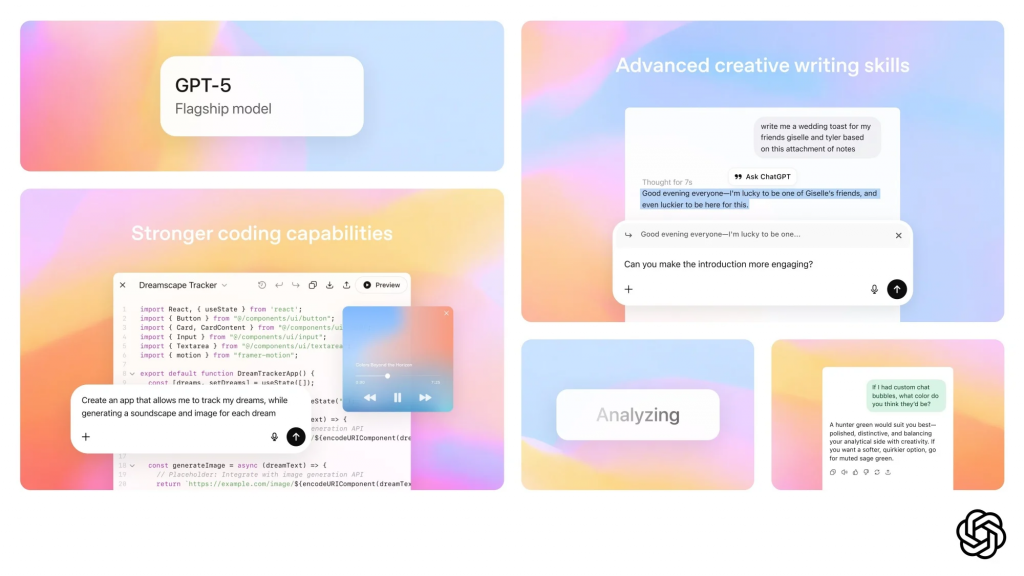
Chat GPT-5 and the Hype Hangover: Why OpenAI’s Latest Model Sparks More Questions Than Answers
The arrival of Chat GPT-5 was supposed to be the moon landing moment of artificial intelligence, the breakthrough that would cement OpenAI’s dominance and leave rivals scrambling to catch up. But now that it is here, the mood feels less like a triumph and more like a collective shrug. For a company that has been synonymous with the rapid acceleration of generative AI, Chat GPT-5 has not yet lived up to the colossal hype built around it. And that says something about the direction of the AI industry in 2025.
The Hype That Ate the World
Before GPT-5 was even announced, the AI world was buzzing with rumors. Leaks, investor whispers, and think pieces painted it as a potential artificial general intelligence (AGI) candidate, a system that would cross some elusive threshold from clever chatbot to true reasoning partner. Sam Altman, OpenAI’s CEO, fanned the flames with cryptic comments about transformative capabilities. Expectations were sky-high, maybe impossibly so.
And then reality hit. Chat GPT-5 is impressive, sure. It can handle longer context windows, produce more nuanced responses, and shows fewer glaring hallucinations than GPT-4.5. It integrates more seamlessly with multimodal tasks, meaning it can reason across text, images, and even video clips with a smoother workflow. But if you were expecting a machine that could pass as a synthetic Einstein or take over your Monday morning workload in full, you’re probably disappointed.
Why the Letdown Feels Bigger Than It Is

The problem isn’t Chat GPT-5 itself, it’s the narrative around it. The model is objectively better, but AI progress has been framed as exponential rocket fuel. When the last generation saw ChatGPT become a household name and GPT-4 fuel entire industries of startups, the leap to ChatGPT-5 was expected to be world-shattering. Instead, it feels iterative.
But here’s the thing: maybe iteration is the real revolution. When Apple releases a new iPhone that is slimmer, faster, and has a better camera, no one calls it a failure. It’s the predictable, sustainable pace of tech progress. AI, however, is trapped in its own mythology, where every new release is supposed to rewrite the rulebook.
The AGI Mirage
Part of the disappointment stems from the industry’s obsession with AGI. Chat GPT-5 was never going to suddenly wake up, achieve consciousness, or solve humanity’s deepest problems. Yet that idea lingers in the background of every launch. Critics argue that this creates a dangerous hype cycle, where anything short of synthetic godhood feels underwhelming.
Altman himself seems caught between visionary and realist. On one hand, he talks about AI as a civilization-altering technology. On the other, he admits models like GPT-5 are still brittle, prone to errors, and limited by current compute constraints. This tension leaves OpenAI in a strange position: a company constantly hinting at revolution, but delivering evolution.
What GPT-5 Actually Does Well
Let’s not undersell it. Chat GPT-5 makes meaningful advances. The longer context window is a game changer for researchers, writers, and developers who can now feed entire books or codebases into the system without losing coherence. Its multimodal fluency puts it in competition with emerging rivals like Anthropic’s Claude 4 and Google DeepMind’s Gemini 2, making it an indispensable assistant across creative and technical workflows.
There are also subtle but crucial improvements in reliability. Early adopters report fewer nonsensical outputs, better grounding in factual data, and more consistent tone control. For businesses building on AI, that kind of predictability is worth more than flashy new tricks.
The Competitive Landscape

The timing of GPT-5’s lukewarm reception is significant. The AI field is more crowded than ever. Anthropic is pushing hard on constitutional AI that emphasizes safety and steerability. Google is flexing its compute muscle with Gemini, which some argue is already more advanced in certain reasoning benchmarks. Meta is leaning into open source with Llama, democratizing access to cutting-edge models.
In this environment, Chat GPT-5 feels less like the undisputed king and more like one powerful contender in a battle royale. For users, that’s good news. Competition means faster progress, lower costs, and more choice. For OpenAI, it means the old aura of inevitability is fading.
Where OpenAI Goes From Here
If Chat GPT-5 isn’t the AGI moment, what’s next? Altman has hinted at GPT-6 being a bigger leap, possibly with architectural changes that go beyond scaling. But here’s where things get interesting: maybe the future of AI won’t hinge on one model release at all. Instead, the real breakthroughs could come from how these models are integrated into everyday life. Think of AI copilots embedded into every app, devices that anticipate needs, or new creative tools powered by models like GPT-5.
OpenAI may also pivot toward services rather than raw model hype. Already, products like ChatGPT Enterprise are proving more lucrative than consumer subscriptions. If GPT-5 is solid enough to become a dependable backbone for enterprise, then the so-called failure to wow may be irrelevant to its long-term impact.
The Culture of Expectation
There’s another angle here: how much of this disappointment is really about Chat GPT-5, and how much is about us? We live in a culture primed for spectacle. Every tech launch is supposed to be the next iPhone moment, every AI release the dawn of a new era. When progress instead looks like slow, steady refinement, it feels anticlimactic.
But in hindsight, this might be exactly how true paradigm shifts happen. Electricity didn’t change the world overnight. The internet took decades to move from dial-up curiosity to the backbone of modern society. AI might be following the same trajectory, even if Twitter demands fireworks every six months.
My Take: GPT-5 Is a Success in Disguise

Here’s where I land. GPT-5 may not blow your mind, but it will quietly change your workflows. It will save researchers time, make developers more efficient, and let creatives push projects further. It is a foundation, not a finish line.
The real story isn’t that GPT-5 failed the hype test. It’s that our hype tests are broken. By expecting a new epoch with every release, we set ourselves up for disappointment. GPT-5 is powerful, practical, and poised to integrate more deeply into our digital lives. That should be exciting enough.
The Road Ahead
So where does this leave us? With a model that is better, not miraculous. With a company learning to balance hype with reality. And with an industry that is still in its infancy, despite the breathless coverage.
When the dust settles, GPT-5 might be remembered not as the revolution we demanded, but as the quiet evolution we needed. The real fireworks may come later, but this step matters. Sometimes, progress is about laying bricks, not toppling walls.







